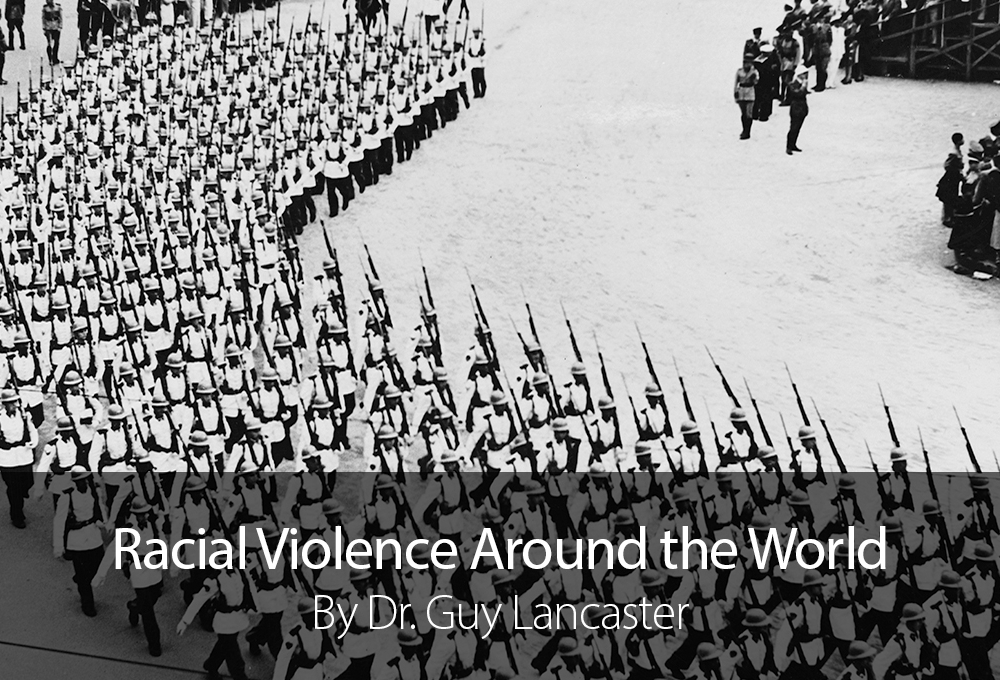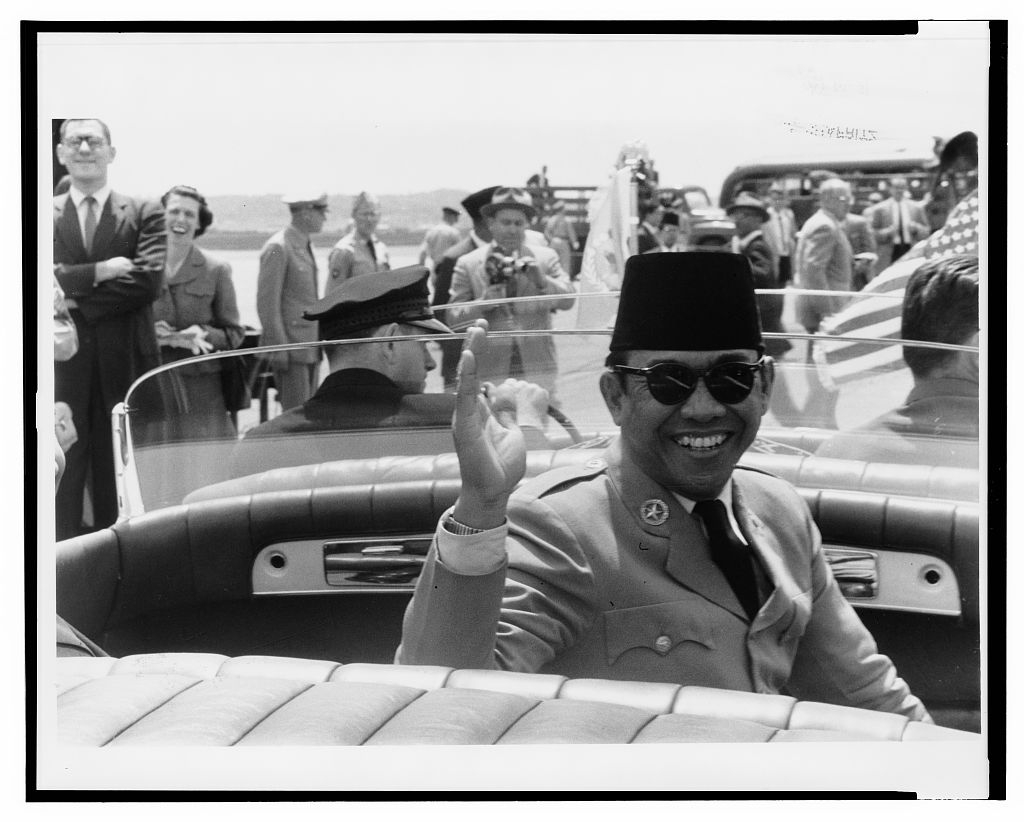The Elaine Massacre can be understood according to a local context of interpersonal relationships, a regional context of cotton production married to racial oppression and violence, and a national context of the post–World War I “Red Scare.” There is also an international context to the violence at Elaine. The Equal Justice Initiative (EJI), among other organizations and scholars, classifies the Elaine Massacre as a mass lynching event, and a growing body of scholarship does apply the framework of lynching to cases of collective violence throughout history and across the globe; historians Michael J. Pfeifer, William D. Carrigan, and Christopher Waldrep have published anthologies on this theme. However, perhaps the most applicable international parallels are examples of collective violence in opposition to egalitarian political movements.
In 1889, Brazil was declared a republic following the overthrow of Emperor Dom Predro II. But this republic was dominated by elites, and dissatisfaction with the government quickly grew among Brazil’s poor. The settlement of Canudos in northeastern Brazil became one of the focal points of this dissatisfaction. Under the leadership of religious mystic Antonio Conselheiro, Canudos grew into a thriving, self-sufficient and multi-ethnic city of 35,000, filled with those who had long been labeled outcasts, such as the descendants of fugitive slaves and the indigenous Kiriri. Landowners demanded the movement, which they dubbed “communist,” be repressed, and in 1896 the military massacred 150 movement followers on a peaceful procession. The city of Canudos held out against relentless military assault for many months before finally falling on October 2, 1897. Soldiers subsequently raped and murdered thousands, leaving only an estimated 150 survivors. Latin America witnessed many more massacres throughout the twentieth century, most notably during the “Red Scare” of the 1980s. Soldiers of the Salvadoran army murdered hundreds of civilians at El Mozote in December 1981, while the Guatemalan army repeatedly massacred the indigenous Maya as part of its campaign against leftist insurgents from 1981 to 1983.
In Indonesia in the 1960s, the Indonesian Communist Party (PKI), although never the ruling party, achieved significant electoral success by promising to address rampant postcolonial inequality through an ambitious program of land reform. The military, which owned significant tracts of land, viewed the PKI as its chief adversary. On October 1, 1965, a group identifying itself as the September 30th Movement killed six of Indonesia’s top generals. The military, led by future dictator Suharto, claimed that the murders were part of a PKI-sponsored coup against the democratically elected, left nationalist President Sukarno and used the coup as a pretext to push Sukarno aside and eliminate the PKI. For approximately a year, the military and its allies killed more than 500,000 people alleged to be communists or communist sympathizers. The brutal Suharto dictatorship would not come to an end until 1998.
Post-independence India has been the site of numerous massacres, especially against religious groups such as Sikhs and Muslims. However, parallels to the Elaine Massacre can be found in caste-related violence, especially massacres of Dalits (formerly called “untouchables”). In 1968, landless Dalits organized a union and went on strike in the village of Kizhavenmani to improve their working conditions. In response, local landlords and their henchmen massacred forty-four of the strikers and their family members—including twenty-three children. In 1994, upper-caste landlords opposed to land reform and wage demands created the vigilante organization Ranvir Sena, which carried out multiple mass killings of Dalits and their political sympathizers in subsequent years; at Bathani Tola in 1996, for example, the group specifically targeted women and children, killing twenty-one people. Like African Americans in the United States, Dalits in India continue the struggle for the full human rights.
At Elaine, Arkansas, in 1919, the landowning elite used the full force of state power to repress, with maximum violence, a movement that threatened to liberate their workers from the chains of poverty into which they had so profitably been shackled. However, this brief survey shows that Arkansas landowners were not so unique in their recourse to violence—that pattern has played out across the whole world.
Header Image: Farm Security Administration - Office of War Information Photograph Collection, Library of Congress.
For More Information
Brett, Roddy. The Origins and Dynamics of Genocide: Political Violence in Guatemala. Basingstoke, UK: Palgrave Macmillan, 2016.
Carrigan, William D., and Christopher Waldrep, eds. Swift to Wrath: Lynching in Global Historical Perspective. Charlottesville: University of Virginia Press, 2013.
Danner, Mark. The Massacre at El Mozote. New York: Vintage, 1993.
Dwyer, Philip G., and Lyndall Ryan, eds. Theatres of Violence: Massacre, Mass Killing, and Atrocity throughout History. New York: Berghahn Books, 2012.
Gorringe, Hugo. “Which Is Violence? Reflections on Collective Violence and Dalit Movements in South India.” Social Movement Studies 5.2 (2006): 117–136.
Kannabiran, Kalpana, ed. Violence Studies. New Delhi: Oxford University Press, 2016.
Levine, Robert. Vale of Tears: Revisiting the Canudos Massacre in Northeastern Brazil, 1893–1897. Berkeley: University of California Press, 1992.
Pandey, Gyanendra. A History of Prejudice: Race, Caste, and Difference in India and the United States. New York: Cambridge University Press, 2013.
Pfeifer, Michael J., ed. Global Lynching and Collective Violence. 2 vols. Urbana: University of Illinois Press, 2017.
Robinson, Geoffrey B. The Killing Season: A History of the Indonesian Massacres, 1965–66. Princeton, NJ: Princeton University Press, 2018.
About the Author
Dr. Guy Lancaster is the editor of the online Encyclopedia of Arkansas History & Culture, a project of the Butler Center for Arkansas Studies at the Central Arkansas Library System, as well as an adjunct professor at the University of Arkansas Clinton School of Public Service. He is the author or editor of three books on racial violence in Arkansas.

